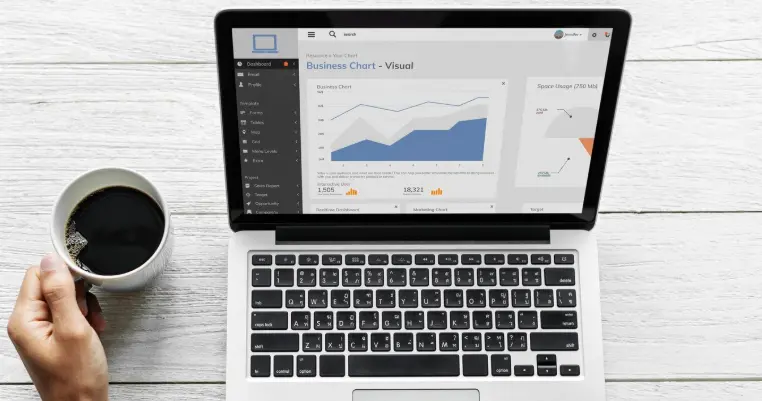When it comes to running successful digital ad campaigns, tools that help optimize performance are key. One such tool that used to be a go-to for many marketers was Google Display Planner.
Designed to assist in planning and forecasting Google Display Network (GDN) campaigns, it was a handy tool that provided insights into audiences, budget suggestions, and potential reach.
But as with all things in the tech world, things change. Let’s take a deeper dive into what Google Display Planner was, whether it’s still around, and what you can use instead to maximize the success of your campaigns!
What is Google Display Planner?

Google Display Planner was a tool provided by Google to help advertisers plan their display advertising campaigns more effectively.
It allowed users to find potential audiences for their display ads, estimate how much traffic and conversions they could expect, and determine which websites or apps might be the best fit for their ads.
The tool worked by analyzing a combination of factors such as your chosen target audience, budget, and the Google Display Network (GDN), offering data-driven insights that could help guide your decision-making process.
Advertisers could use Google Display Planner to select the right targeting options for their campaigns and make educated guesses about how those campaigns would perform before even launching them.
It made the process of setting up display campaigns more streamlined and efficient by providing suggested keywords, audience insights, and budget recommendations.
This allowed advertisers to save time and effort while ensuring their display ads would reach the right people.
Is Google Display Planner Still Around?
Unfortunately, Google Display Planner is no longer available. Google phased out the tool a while ago, integrating many of its features into other Google Ads functionalities.
While it may have been a favorite for many marketers in the past, Google has transitioned to newer tools, like the Google Ads Keyword Planner, Google Analytics, and Google Ads Smart Campaigns, which offer more advanced features and greater flexibility for users.
Now that Google Display Planner is a thing of the past, let’s explore how you can still forecast your campaigns’ success and take advantage of the tools Google currently offers.
Stay tuned for our next section, where we’ll show you how to forecast campaign success effectively with today’s tools.
How to Forecast the Success of a Campaign Now?
Although Google Display Planner is no longer available, forecasting the success of your Google Ads campaigns is still very much possible. In fact, there are even more advanced tools and strategies today to help you predict and optimize campaign outcomes.
1. Google Ads Keyword Planner
One of the best ways to forecast the success of a campaign is by using Google Ads Keyword Planner.
It helps you understand the potential traffic your keywords can generate based on historical data and trends.
By selecting relevant keywords for your display campaign, you can estimate the search volume and competition, which can give you a good idea of how well your ads will perform.
2. Google Analytics
Google Analytics, a tool you should definitely be using alongside Google Ads, provides valuable insights into how well your campaigns are performing.
Using Google Analytics’ impressions data and audience reports, you can see which segments of your target audience are engaging with your ads the most.
This helps you refine your targeting and budget allocation, giving you a more accurate forecast of your campaign’s potential.
3. Conversion Tracking
One of the key metrics for predicting success is your conversion rate.
By tracking conversions with Google Ads and Google Analytics, you can gauge how many users take the desired action after clicking your display ads.
With data from past campaigns, you can also calculate the average cost per conversion, helping you predict how much budget you’ll need for similar results in future campaigns.
4. Smart Bidding and Machine Learning
Google Ads now uses machine learning and AI-powered features like Target CPA (Cost Per Acquisition) and Target ROAS (Return on Ad Spend) to help predict and optimize your bids for better performance.
These smart bidding strategies adjust your bids in real-time to maximize conversions based on historical data and trends.
By using these features, you can predict success by setting goals for conversions and monitoring your budget allocation.
Excellent Alternatives to Google Display Planner
While Google Display Planner may be gone, there are several excellent alternatives that can help you plan and optimize your Google Ads display campaigns. Here are a few of the top options:
Google Ads Audience Insights
One of the most powerful alternatives to Display Planner is Google Ads Audience Insights.
This tool provides detailed reports on the demographics, interests, and behaviors of your target audience. By understanding who your ideal customers are and where they spend their time online, you can better target your display ads to reach them effectively.
This tool offers a great way to refine your ad targeting strategy, ensuring your ads reach the most relevant audience.
Facebook Audience Insights
While not directly related to Google Ads, Facebook Audience Insights offers a similar concept by providing valuable information about your audience’s demographics, behaviors, and interests.
Many businesses use Facebook Ads and Google Ads together to run cross-platform campaigns.
By using Facebook Audience Insights, you can gather data on your target audience and apply it to your Google Ads display campaigns to increase relevancy and improve performance.
SpyFu
SpyFu is another valuable tool for competitive analysis. It allows you to see what keywords your competitors are targeting and how well their display ads are performing.
By examining their strategies, you can adjust your own campaigns to better compete.
This tool also provides data on ad copy and landing pages, which can help you improve your display ad creatives and landing page experience for a higher likelihood of success.
Semrush
Semrush is a comprehensive digital marketing tool that includes keyword research, competitor analysis, and advertising insights.
Using Semrush’s paid ad research tools, you can gain insights into your competitors’ display ads and their performance, as well as identify opportunities for your own campaigns.
This makes it an excellent alternative for refining your ad targeting and campaign forecasting.
WordStream Advisor
If you’re looking for a tool that simplifies Google Ads management, WordStream Advisor is a great option.
This platform provides intelligent recommendations for improving your Google Ads campaigns based on performance data.
It can also help you forecast campaign success by suggesting optimizations that improve targeting, bidding strategies, and ad creatives. It’s a great all-in-one platform for campaign management.
Conclusion
In conclusion, while Google Display Planner may no longer be available, there are still plenty of powerful tools and strategies you can use to forecast the success of your Google Ads campaigns.
By leveraging tools like Google Ads Keyword Planner, Google Analytics, and the power of machine learning features like Smart Bidding, you can effectively predict how your campaigns will perform and make data-driven decisions to improve results.
And when it comes to finding the right tools and strategies for your campaigns, we at Ostenpowers are always here to help.
Our team of Google Ads experts in Sydney specializes in crafting strategies that not only help you forecast success but also maximize the ROI on every display campaign you run.
After all, a little guidance can go a long way in the world of Google Ads, and we’re here to help you every step of the way!









